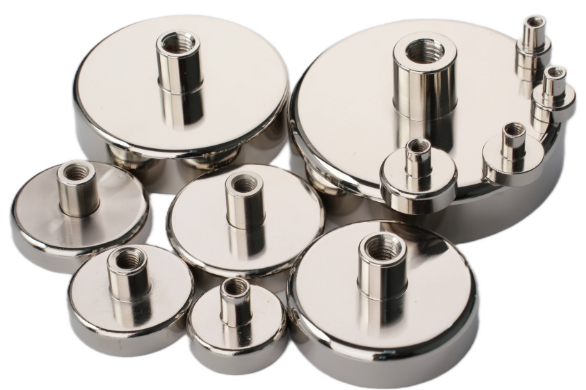Precaution for Handling Neodymium Magnets
Neodymium magnet, also called NdFeB magnet, is the most commonly used rare earth magnet. NdFeB magnets are widely used in electronic products, such as hard drives, mobile phones, earphones, and battery-powered tools thanks to their excellent physical and chemical properties. In this article, let's take a closer look at the precaution for handling neodymium magnets.
 Precaution for Handling Neodymium Magnets
Precaution for Handling Neodymium Magnets
Here we recommend a list of general precautions:
1. Be sure to wear heavy work gloves (with impact protection), goggles, and steel-toed boots. 2. Before handling neodymium magnets, be sure to conduct a field-level risk assessment. Think about what you need to use magnets for. Look around and find ferromagnetic objects that may "fly" toward you and your magnets and hurt you (for example, metal parts, tools, and other magnets). Assess the possibility of accidents and how to prevent them from occurring. For example, move any magnetic attractive items 3 feet away. 3. Be sure to handle the neodymium magnets one by one. With huge pulling forces, they may be difficult to separate or collide with each other when they are put together. When you receive neodymium magnets from Stanford Magnets, you can find a spacer material between them, such as a piece of wood, plastic, or cardboard, so that they can be easily removed by sliding them horizontally. For example, if they are axially magnetized, slide them diametrically. Some of our inventory items have a pull force close to or over 100 pounds. 4. Neodymium magnets and SmCo magnets should be kept at least 2 inches away from the ceramic magnet to prevent demagnetization of the ceramic magnet. 5. When you are designing applications involving neodymium magnets, please keep in mind that they can be easily broken with impact, corrode in humid or acidic environments, and begin to lose magnetism when the temperature exceeds 80°C. Make sure to fully and securely install one magnet before moving on to the next piece. For instance, wait for the epoxy between the steel cup and magnets to fully dry out for maximum adhesiveness. 6. Do not let children play with neodymium magnets. If the neodymium magnets are swallowed, they can block the esophagus and cause suffocation. Teenagers may not yet understand the above precautions and the severity of possible harm and damage. 7. Before dealing with these powerful products, it is important to educate yourself and your colleagues to ensure that everyone is safe and healthy.
Conclusion
Thank you for reading our article and we hope it can help you to have a better understanding of the precautions for handling neodymium magnets. If you want to learn more about neodymium magnets or other types of magnets, we would like to advise you to visit Stanford Magnets for more information. As a leading magnet supplier across the world, Stanford Magnets has been involved in R&D, manufacturing, and sales of magnets since the 1990s. It provides customers with high-quality permanent magnets like SmCo magnets, neodymium magnets, AlNiCo magnets, and ferrite magnets (ceramic magnets) at a very competitive price.















